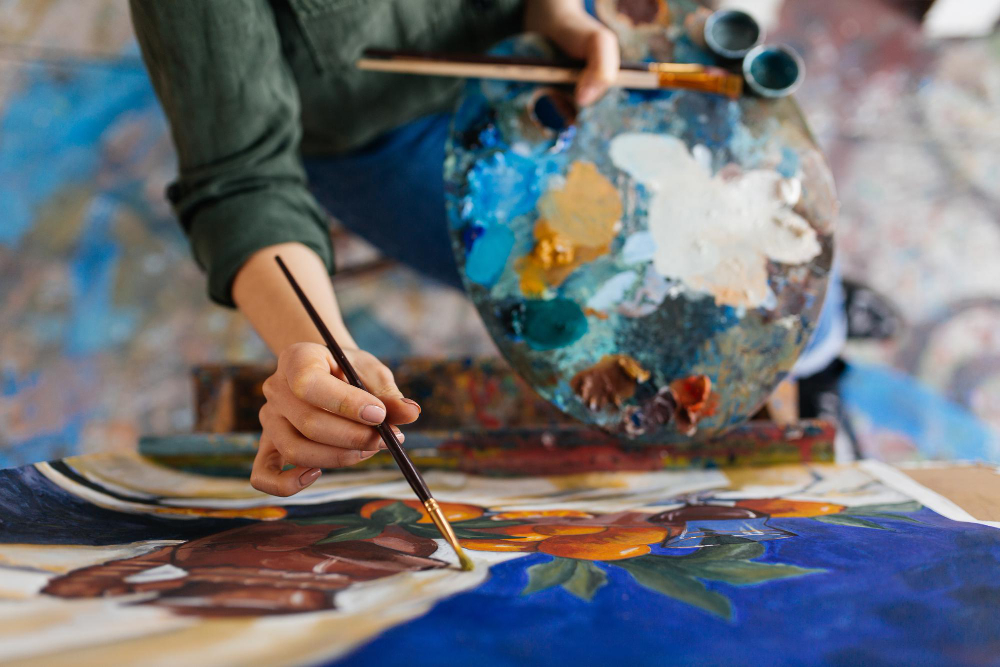We love to talk about talent in art. The spark of genius, the soul poured into canvas, the voice breaking through sound waves. But here’s the inconvenient truth no one really wants to say out loud: behind so many celebrated artistic breakthroughs… is a trust fund.
Yes, it’s uncomfortable. And yes, it doesn’t make the art less meaningful.
But if we’re being honest, generational wealth—those quiet financial cushions passed down through real estate, inheritance, or just plain old money—plays a huge role in what kind of art gets made, who gets to make it, and what trends take hold in pop culture.
But how exactly does generational wealth shape art trends? Let’s figure it out.
It Starts with Patronage: The Historical Roots of Wealth in Art
Art has always had a “sponsor.” Sorry, but it’s true. Back in the day, you needed the blessing of nobility or the Church to make anything more elaborate than cave doodles. Michelangelo wasn’t freelancing—he was on the Medici payroll.
Modern art isn’t so different. The forms have changed, but the principle hasn’t. People with resources still fund people with vision. It just looks more casual now.
In the Lone Star State, for example, it’s not uncommon for properties to be transferred through a quitclaim deed Texas—a simple way to move ownership between family members. There’s no title guarantee, but there’s also no mortgage payment, which can be the difference between survival and freedom to create.
That’s the kind of low-key leg-up that doesn’t show up in the artist’s bio but absolutely shaped their trajectory. That house might turn into a studio. Or rental income. Or just a way to avoid scrambling for rent while preparing a gallery show. It’s support—quiet and powerful.
It Controls Access: Who Gets to Be an “Artist”?
Here’s a tricky one. Because yes, anyone can be an artist. But not everyone gets to make art full-time. Or even part-time.
You know the drill: materials cost money, studio space is brutal, and don’t even get started on unpaid residencies. A 2018 survey by Creative Independent found that 60% of working artists in the U.S. reported earning less than $30,000 a year from their creative work. Meanwhile, nearly half relied on family support at some point to keep going.
It’s not about blaming anyone for having help. But we’ve got to be honest—if you have to bartend six nights a week just to survive, your creative energy gets drained fast. And when art becomes a luxury hobby instead of a viable career, we start losing whole perspectives.
Think of all the street-level stories that never get told because someone had to drop their camera and pick up another shift. Think about the sculptor who couldn’t afford a kiln. The writer who gave up after their third eviction.
It’s not just individual loss. It’s cultural.
It Sets the Market: How Collectors Dictate Trends
This one’s a little uncomfortable. But hey, let’s go there.
Art trends don’t just happen. They get shaped by galleries, by institutions, and, let’s be real, by collectors with deep pockets. And collectors? They tend to come from money, too. So, it makes sense that they gravitate toward work that reflects or flatters their experiences.
Look at the past decade of gallery trends—minimalist abstraction, conceptual work heavy on theory, and sleek digital aesthetics. These styles aren’t bad. But they’re often the product of elite MFA programs and global residencies that most people can’t afford to even apply to.
Meanwhile, deeply personal, regional, or community-driven art gets brushed off as “outsider” or “folk” or worse—ignored entirely.
It Preserves Legacies: Dynasties and Their Museums
Let’s walk into a museum. Take a wild guess whose name is on the wing.
From the Rockefellers to the Guggenheims, cultural institutions have long been curated by those who could afford to shape them. Wealth doesn’t just fund art—it curates history.
And not just history in general—their history. Their collections. Their priorities. And their relatives, sometimes. An investigative article from The Lab notes that 40% of museum trustees were directly connected to the financial industry or private wealth. That’s not a neutral crowd.
What about artists without that lineage? They might get a temporary exhibit—maybe. But long-term preservation? Archives? Institutional support? That’s rare.
You can be brilliant, influential, and totally forgotten within a decade—unless someone with a lot of money decides you’re worth remembering.
The Frame Around the Picture
Let’s not twist this into a guilt trip. Having support doesn’t make your art fake. It doesn’t mean you didn’t work hard. But pretending the system is neutral? That’s just naïve.
What we can do is shift how we think about value and access. Invest in local art. Pay emerging artists. Push for grants that don’t require ten unpaid internships and a letter from someone at Sotheby’s. And if you’re someone who did get a head start? Maybe pull someone else up with you. Or at the very least, don’t pretend you did it all alone.

